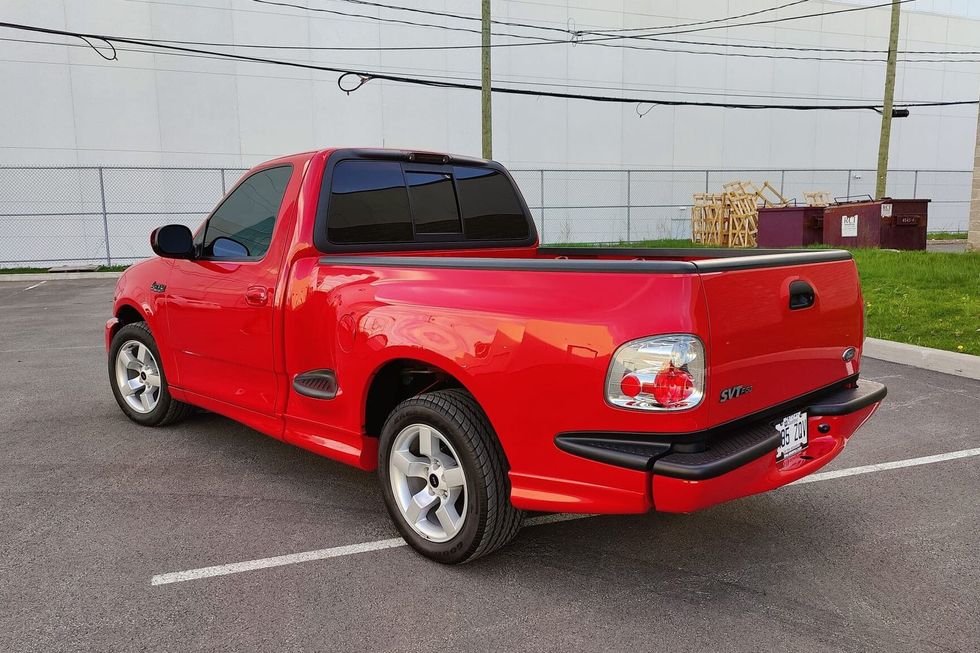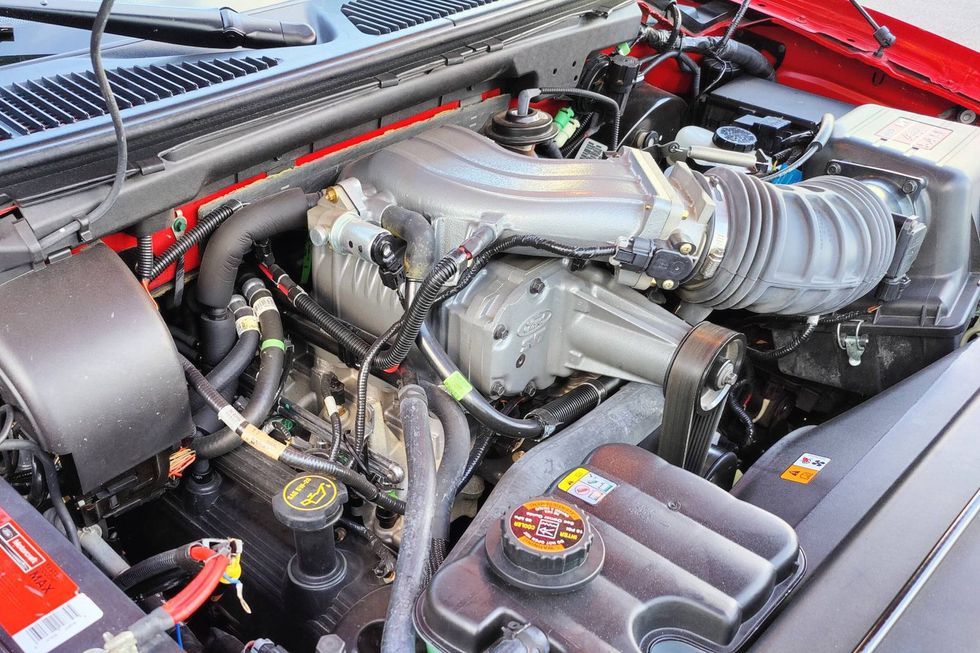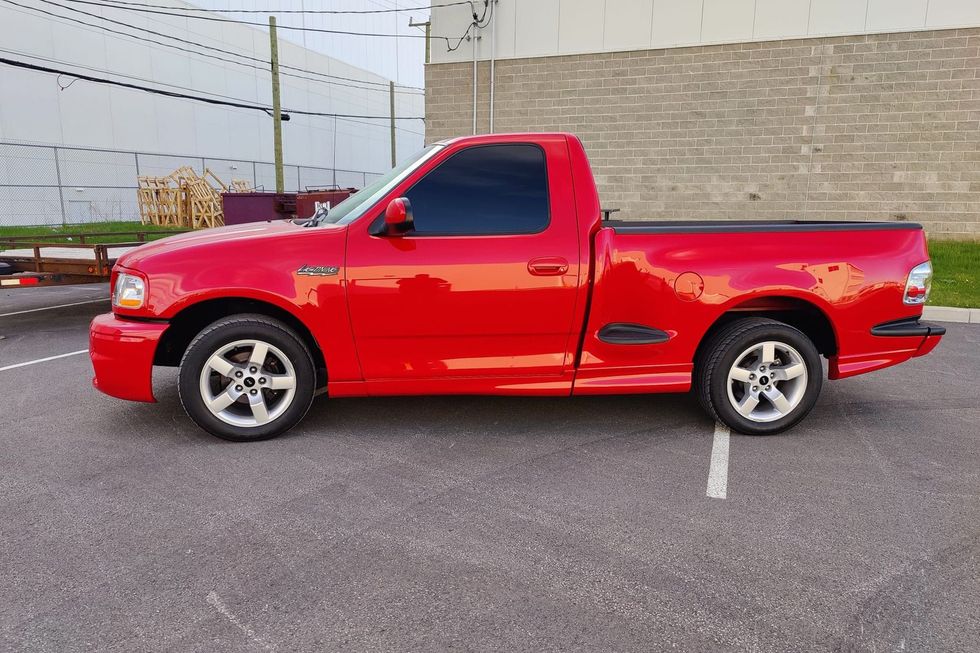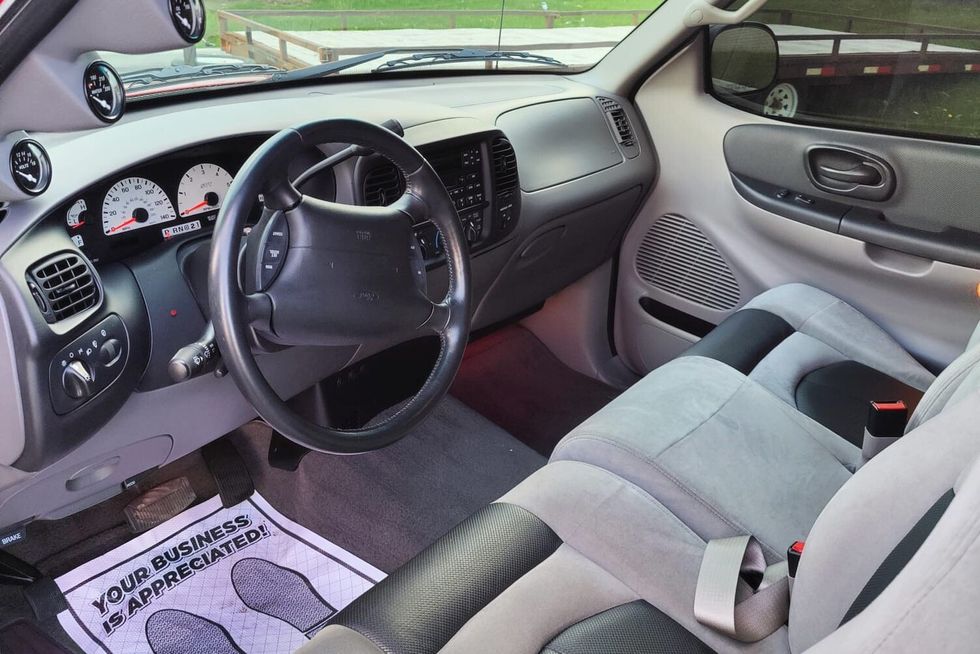Taste the High Country - 1950 Mack
A massive 1950 Mack that slaked Colorado's thirst
09/23/2018


In a nutshell, here was the problem: As the West became tamed and permanent residents settled, it became apparent that the new citizens of Greeley, in the future state of Colorado, faced the danger of becoming parched. The allotments of water rights--whose value related to development, agriculture and political power were nearly incalculable--had been oversold in the land-rush stampede that had subdivided the territory. Even after runoff from snowmelt had collected in reservoirs on the Front Range, east of the Rocky Mountains, there wasn't enough water.
Serious attempts at remedying the critical shortfall began shortly after Colorado attained statehood in 1876. One of the most far-reaching legislative accomplishments in American history came in 1922, when seven states ratified the Colorado River Compact, under which they agreed to share the water resources of that waterway. The federally managed construction of Boulder Dam, and its feed of drinking water and electricity to Las Vegas and Southern California, was one benefit. So was a plan to help the water-starved areas of northeastern Colorado.
Doing so would require a gigantic concept on par with the future Hoover Dam, moving huge amounts of water across the Continental Divide to the opposite side of Colorado. The first studies of the issue, which began in 1933, conceptualized a network of new dams and reservoirs, plus a 13-mile tunnel under the Continental Divide. Actual construction of the Colorado-Big Thompson project began in 1938 and, with an interruption for World War II, took until 1959 to finish. The job took place under tutelage of the U.S. Bureau of Reclamation, the Department of Interior agency tasked with large-scale water management. It's been a longtime purchaser of the heaviest high-powered work trucks extant, such as this 1950 Mack LJSW owned by collector John MacFarlane of Oakville, New York.
Not only is this an exceptionally well-restored truck, it's an actual Bureau of Reclamation veteran that specifically worked on the huge Big Thompson water-diversion job. It has a Cummins 200hp six-cylinder diesel for power, linked to a five-speed Mack main transmission and a three-speed Brown & Lipe auxiliary, creating what is called a 5x3 gear combination. The ratio for each of the twin-screw axles is 9.02:1. That means this Mack can do some pulling. Speaking of which, John told us that there is a huge Gar Wood power winch behind the cab. John said it's rated at 30,000 pounds, adding that he's seen other flat-drag winches handling up to 50 tons in a straight pull.
"The Mack was first ordered by the General Services Administration in 1948 for the Bureau of Reclamation," John explained. "It wasn't delivered until November 1950. Why the two-year hiatus, I don't know. It was first delivered to Philadelphia and then disappeared for a while, and was almost just a bare chassis with just a cab: no turn signals, no fifth wheel, no winch, no nothing. What was unusual was that the frame length, from the back of the cab to the rear of the frame, was 20 feet, the most you could get with an LJSW. So it's not clear exactly what the government had first intended to do with it. Once it got to the Big Thompson site, the Bureau actually moved the drive wheels and rear suspension forward, shortened the frame, then added the winch, fifth wheel, electric sanders, a 20,000-BTU heater and more."
It's also unclear when the modifications took place. John has the original government service records via Mack, and the first one dates to 1952. What is more certain is that the Mack was part of a huge fleet of trucks, also including potent Kenworths and Sterlings, that hauled heavy equipment and materials for years on end. John said he has documentation indicating that the LJSW was converted into a tractor and assigned to haul huge loads of six-inch steel pipe, essential to feed water from one side of Colorado to the other. The winch likely dragged the pipe onto the trailer, and would have been helpful to lift the trailer so it could be connected to the fifth wheel. There are also provisions to mount a derrick's A-frame at the rear of the frame.
Other documentation shows that the Mack was mainly assigned to work areas around Loveland, Colorado, at 5,000 feet of elevation. The project team's only mistake was that they should have gotten a turbocharged or supercharged engine; the normally aspirated Cummins must have smoked terribly.
The Mack was sold off at a GSA auction in 1980, almost 30 years to the day after its delivery. A local contractor used it for a time to pull a rock crusher. It next went to a rigging contractor in Indianapolis who did a partial cosmetic restoration. When John made contact with him, the truck was spewing raw diesel through a blown head gasket--a Cummins 200 has three of them, one for each pair of cylinders. Appearance-wise, John restored it to Bureau yellow and Mack black. The cab logo replicates the Bureau design, an image of Hoover Dam inside a water drop.
"I'm glad I did it, because they're a rarity. The old tandem LJs have all been scrapped. It's a real problem with restoring old trucks, or getting the parts. When scrap steel gets up to $300 or $400 a ton, trucks like these get cut up and shipped to China."
Forget Ford’s groundbreaking electric truck for a moment to consider this 2001 Ford SVT F-150 Lightning now offered on Hemmings Auctions. Instead of the dual permanent-magnet motors found in the current electric Lightning, the 1999-2004 SVT Lightning featured a supercharged version of Ford’s 5.4-liter “modular” OHC V8. Rated at 380 horsepower in the 2001-’04 models, it was good enough to make a stock lightning a formidable opponent on the street as well as at the strip.
A follow-up to the original 1993-’95 F-150 Lightning, which was a high-performance version of a standard F-150, the second-generation SVT super truck presented as a more thoroughly developed model with a lot more exclusive components that further differentiated it from the rest of the F-Series lineup. Beyond the engine, the entire suspension and braking system, not to mention aerodynamic body add-ons, were part of the Lightning package from 1999 through 2004. Exclusive interior components were also part of the package.
At the heart of this SVT Lightning is its iron-block 5.4-liter SOHC, 16-valve V8 with a supercharger and an intercooler. The blower helped it deliver 380 horsepower and 450 lb-ft of torque in 2001, up some 20 horsepower and 10 lb-ft from the ’99 and 2000 models. The Eaton supercharged engine delivered peak boost of 8.0 psi and the engine featured an 8.4:1 static compression ratio, down from the standard 5.4 V8’s 9.0:1, which was rated at 260 horsepower and 350 lb-ft.
Power reached the rear 18-inch cast aluminum-alloy wheels via a four-speed automatic, an aluminum driveshaft and a beefy 9.75-inch, limited-slip rear axle with an acceleration-friendly 3.73:1 final-drive ratio, another upgrade for 2001. Car and Driver magazine reported a 0-60 mph time of 5.2 seconds and a quarter-mile in an E.T. of 13.8 seconds at 104 mph—impressive numbers for a 4,600-pound truck. Top speed was a drag-limited 142 mph.

Trucks generally require a suspension that can handle a full load in its bed while also providing competent driving while empty. But if you fancy one designed to a sports-car standard, then something has to give. In the case of the second-gen Lightning, Ford dropped its payload capacity to a mere 800 pounds. A standard 2001 F-150 Styleside carried a 3,180-pound payload rating, while an F-150 Flareside was rated at 2,005 pounds, some two-and-a-half times the Lightning, which featured the short-bed Flareside body. Towing capacity, likewise, was reduced from 8,800 pounds to 5,000 in the Lightning. But the Lightning’s strengths were never its payload or towing capacities, but it’s ability to perform like a sports car.
As a 21st century performance vehicle, however, the second-gen Lightning was also equipped to handle. A half-inch drop at the front was accompanied by SVT-specific coil springs and Bilstein shocks along with an exclusive 31-mm solid anti-roll bar. SVT’s influence continued at the rear with Lightning-specific five-leaf springs and a 23-mm solid anti-roll bar. The Bilstein setup at the rear included the right-rear shock staggered toward the front of the truck to reduce axle hop under heavy acceleration. The four-wheel antilock disc brakes were cribbed from the three-quarter-ton F-250, with 12.1-inch front rotors at the front and 13.1-inch discs at the rear.

As the years go on, fewer and fewer clean, unmolested low-mileage examples are out there, which is why this 2001 Ford SVT F150 Lightning now on Hemmings Auctions caught our attention. Showing just 5,525.5 miles on its odometer at the time of submission, it is said to be in “mint” condition and have an “immaculate” finish in the seller’s words. No modifications are noted to any part of the vehicle. The 18-inch factory alloys don’t appear to have any curb rash, though the Goodyear performance tires may be original. About the only deviations from stock are the tinted windows.
The latest electric-only F-150 Lightning is certainly a quick vehicle in its own right, but this 2001 edition from the engineers at SVT was built for excitement, not range. It was made with an old-school muscle-car vibe along with modern handling and braking. Which Lightning would you look good behind the wheel of?
Take a look at this second-gen Lightning on Hemmings Auctions before the bidding ends.

Spring is here. As the snow melts and the daffodils bloom, it’s time for many vintage cars to emerge from winter hibernation and get back on the road. Thinking of adding to the collection? We have 10 vehicles in spring-like shades of yellow – including cars and trucks, U.S. and European – to catch your eye.

















































